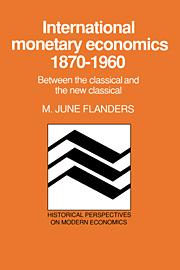Summary
The adjustment mechanism
This study deals with some topics in the development of the theory of international adjustment. Other names for it are: international monetary economics, the macroeconomics of an open economy, the theory of the balance of payments (or the theory of exchange rates). It sometimes includes some well-known specific sets of questions, such as the “transfer problem”, and the “theory of devaluation”.
There are those who argue that there is no such thing as a separate theory of the balance of payments, or of exchange rates. This is true in the same sense that there is not a separate theory of labor market adjustments, of investment, or of taxation. All of these are (correctly) viewed as part of a general equilibrium system. Most economists, nevertheless, find it convenient for various purposes to single out pieces of that general model and scrutinize them more closely. As long as there are different “countries” (which can be defined as units with their own money and monetary institutions) and as long as transactions with residents of the same country are viewed differently from those involving residents of other countries – so long does it make sense to look at this section of a general-equilibrium system with a closeup lens. This in no way denies its “general equilibriumness”. In any event, I am dealing here with the history of ideas. I did not invent the field – I am merely studying it.
- Type
- Chapter
- Information
- International Monetary Economics, 1870–1960Between the Classical and the New Classical, pp. 3 - 25Publisher: Cambridge University PressPrint publication year: 1990

